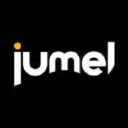Summary
to understand this market
Detailed content
 Inforamtion
Inforamtion
- Number of pages : 30 pages
- Format : Digital and PDF versions
- Last update : 27/04/2023
 Summary and extracts
Summary and extracts
1 Market overview
1.1 Definition and presentation
Jam is a mixture made with sugar and fruit pulp or puree. It can be incorporated into many culinary preparations (yoghurts, fritters, pancakes, toast) and is a classic breakfast food. There are different types of jams depending on the proportion of sugar and fruit, but also on the production method: industrial or artisanal.
Worldwide, the jam market is on a positive growth trajectory, a trajectory that has been reinforced since the emergence of covid-19. The pandemic has boosted sales of prepared products and increased time spent at home, with more time spent at breakfast. North America remains the world's leading market, and Europe the second, with organic sales increasing.
In Spain, the main companies in the sector are Unilever España, Grupo Àngel Camacho, Grupo Helios and Hero España. The jam market is relatively mature, with a stable consumer base and a turnover that has been maintained for several years. However, there is an important renewal of the offer: organic, natural, artisanal products, new textures, more fruit and less sugar in their composition or new formats, etc. The sector is full of initiatives and renews its offer to attract a younger clientele looking for healthy products.
1.2 The world market
The evolution of the jam and marmalade market shows steady growth in the coming years. In ****, the market was worth US$*.** billion, and this value is expected to increase year on year, reaching US$*.** billion in ****, US$*.** billion in ****, US$*.** billion in ****, US$*.** billion in ****, US$*.** billion in ****, US$*.** billion in ...
1.3 The domestic market
The turnover of the products of the CNAE code **** that corresponds to the products of the category "Other pre-processing and preserving of fruit and vegetables" (***) experienced a significant growth in recent years. In ****, turnover reached €*.** billion, and in just one year, in ****, it experienced an increase of approximately **%, reaching €*.** billion. The ...
1.4 Spanish foreign trade
Between **** and ****, jam imports and exports in Spain experienced significant changes. Imports increased by *% during this period, rising from $**.*** million in **** to $**.*** million in ****. On the other hand, exports showed a **% growth over the same period, increasing from $***,*** million in **** to $***,*** million in ****.
As forthe trade balance, a positive evolution is ...
2 Demand analysis
2.1 Demand typology
In **** the consumption of jam and marmalade represented in Spain about **.* million kg which formed ***.* million euros of expenditure in total.
Consumption and expenditure of jam and marmalade Spain, ****, millions of kg, millions of euros Source: ****
Per capita, an average consumption of *.* kg with an expenditure of *.* euros was thus ...
2.2 Consumption in HORECA
In the HORECA sector (***), jams can be consumed. Generally, they are consumed with desserts or with cheeses so they are mainly found in hotels for breakfasts or in restaurants and cafe that propose brunches.
First, it should be noted that the HORECA sector was worth **.**% of the total value of the ...
2.3 Homemade and organic marmalade
It is possible to highlight a demand for jam linked to organic products. Indeed, between **** and ****, organic spending increased by **% in Spain and per capita spending also rose by **% from **.** euros to **.** euros on average. Also, jam appears as the *th most sought after item in terms of organic products with ...
3 Market structure
3.1 Market value chain
3.2 Production
The jam market is a concentrated market where few producers can be found. With the search of the terms "marmalades and jams" in the website Empresas, made by the Economist, there are ** producers in all Spain. Therefore, it is a concentrated market in terms of production and that, especially because these ...
3.3 Distribution
The following table presents the brands of jams present in the Spanish market proposed by the main producers and distributors of jams.
Source: ****
Private label brands.
The following table presents the market shares of distributors in Spain in ****. Although we do not have the market shares for private label jams, these ...
4 Offer analysis
4.1 Typology of the offer
Jam and jam :
The main difference between jam and marmalade is the amount of sugar used in their preparation. Jam contains an equal proportion of fruit and sugar, while jam contains more than **% sugar. This makes marmalade softer and less sweet than jam. In addition, jam is prepared from whole fruit, ...
4.2 Prices
The prices of jams depend on the determined factors seen in part *.*. Here is a list of the different prices that can be found in the Spanish market.
Source: ****
4.3 Supply trends
In terms of supply trends, we can highlight * major trends in the jam market:
Artisanal jam. If the handmade jam is at the beginning a product that can be obtained directly in the farms, the industrialists started to create a special segmentation as for this type of products. The brand La ...
5 Regulation
5.1 Legislation
Royal Decree ***/****, of July *, ****, determines the rules for the production and labeling of jams and marmalades.
Regarding the regulatory standards, the following can be found:
The products for jam production must comply with the requirements established in the Spanish and European legislation on food safety. The fruit used must be in ...
6 Stakeholder positioning
6.1 Segmentation
- Unilever España
- Confituras Siboney, S.A
- Conservas Lazaya Frutas Dulces, S.A
- Jumel Alimentaria, S.A
- Alcurnia Alimentación, S.L
- Iberfruta-Muerza
- Grupo Helios
- Conservas Pedro Luis, S.L *
- Hero España, S.A
- Grupo Ángel Camacho, S.L.
 List of charts
List of charts
- Evolución del mercado global de las mermeladas
- Los 10 países que importan más mermeladas
- Los 10 países que exportan más mermeladas
- Evolución de la facturación del mercado del codigo CNAE : 1039 Otro procesado y conservación de frutas y hortalizas
- Gasto de los consumidores en mermelada en España en 2021
All our studies are available online in PDF format
Take a look at an example of our research on another market!
Companies quoted in this study
This study contains a complete overview of the companies in the market, with the latest figures and news for each company. :
 Choosing this study means :
Choosing this study means :
Access to more than 35 hours of work
Our studies are the result of over 35 hours of research and analysis. Using our studies allows you to devote more time and added value to your projects.
Benefit from 6 years' experience and over 1,500 industry reports already produced
Our expertise enables us to produce comprehensive studies in all sectors, including niche and emerging markets.
Our know-how and methodology enable us to produce reports that offer unique value for money.
Access to several thousand articles and paid-for data
Businesscoot has access to all the paid economic press as well as exclusive databases to carry out its market research (over 30,000 articles and private sources).
To enhance our research, our analysts also use web indicators (semrush, trends, etc.) to identify market trends and company strategies. (Consult our paying sources)
Guaranteed support after your purchase
A team dedicated to after-sales service, to guarantee you a high level of satisfaction. +44 238 097 0676
A digital format designed for our users
Not only do you have access to a PDF, but also to a digital version designed for our customers. This version gives you access to sources, data in Excel format and graphics. The content of the study can therefore be easily retrieved and adapted for your specific needs.
 Our offers :
Our offers :
the jam market | Spain
- What are the figures on the size and growth of the market?
- What is driving the growth of the market and its evolution?
- What is the positioning of companies in the value chain?
- Data from several dozen databases
5 reports pack (-15%) ES Spain
- 5 reports at €75.6 excluding VAT per study to choose from our Spanish catalogue for 12 months
- Save 15% on additional studies purchased
- Choose to be refunded any unused credit at the end of the 12-month period (duration of the pack)
See the terms and conditions of the pack and the refund of unused credit.
























